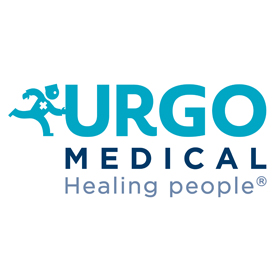Techniques and solutions used in cleansing ulcers: a review of the literature

Submitted: May 17, 2019
Accepted: May 6, 2020
Published: July 24, 2020
Accepted: May 6, 2020
Abstract Views: 1917
PDF (Italiano): 871
PDF: 78
Appendice (Italiano): 113
Appendix: 53
PDF: 78
Appendice (Italiano): 113
Appendix: 53
Publisher's note
All claims expressed in this article are solely those of the authors and do not necessarily represent those of their affiliated organizations, or those of the publisher, the editors and the reviewers. Any product that may be evaluated in this article or claim that may be made by its manufacturer is not guaranteed or endorsed by the publisher.
All claims expressed in this article are solely those of the authors and do not necessarily represent those of their affiliated organizations, or those of the publisher, the editors and the reviewers. Any product that may be evaluated in this article or claim that may be made by its manufacturer is not guaranteed or endorsed by the publisher.
Similar Articles
- Federica Buzzi, Hevan Adel Al-Atroushy, Nizar Bakir Yahya, Hozan Dilneya Rwanduzi, Stefano Maindi, Is it possible to use a 100% Medical Grade Honey in the premature babies? , Italian Journal of Wound Care: Vol. 5 No. 2 (2021)
- Margherita Farì, Maurizio Mercuri , Alessandro Scalise , Continuity of care in the management of pressure lesions: An information leaflet for hospital-territory collaboration , Italian Journal of Wound Care: Vol. 5 No. 1 (2021)
- Laura Dettori, A Descriptive epidemiological study on chronic skin lesions in home care in the districts of Sassari – Alghero – Ozieri , Italian Journal of Wound Care: Vol. 4 No. 2 (2020)
- Stefano Mancin, Elena Alterchi, Silvia Finazzi, Salvatore Badalamenti, Nursing and wound care in the patient with chronic kidney disease in dialytic treatment , Italian Journal of Wound Care: Vol. 5 No. 1 (2021)
- Matteo Bucalossi, Fabrizio Mariani, Autologous peripheral blood mononuclear cells from selective filtration for treatment of chronic lower limb lesions: Results at 4 years , Italian Journal of Wound Care: Vol. 5 No. 2 (2021)
- Matteo Torresetti, Giovanni Di Benedetto, Alessandro Scalise, Is there an alternative to acellular dermal matrix for wound management? Revisiting the role of a bioactive collagen and hyaluronic acid-based dressing hyaluronic acid , Italian Journal of Wound Care: Vol. 4 No. 2 (2020)
- Isabella Lo Castro, The role of the social community networks in the care of chronic wounds , Italian Journal of Wound Care: Vol. 1 No. 1 (2017)
- Andrea Pazzini, Barbara Biselli, Chiara Vannini, Elisabetta Fabbri, Felice Falabella, Maria Giulia Santandrea, Marianna Marziliano, Nicole Gagliardi, Sara Di Giandomenico, Simona Scotto di Minico, Vito Di Biasi, Can the Braden scale predict the development of pressure injuries in intensive care? , Italian Journal of Wound Care: Vol. 7 No. 3 (2023)
- Giovanni Petracca, Francesco Zappia, Giuseppe Maccarone , Necrotizing fasciitis: A case report and a review of the literature , Italian Journal of Wound Care: Vol. 5 No. 2 (2021)
You may also start an advanced similarity search for this article.



 https://doi.org/10.4081/ijwc.2020.51
https://doi.org/10.4081/ijwc.2020.51





